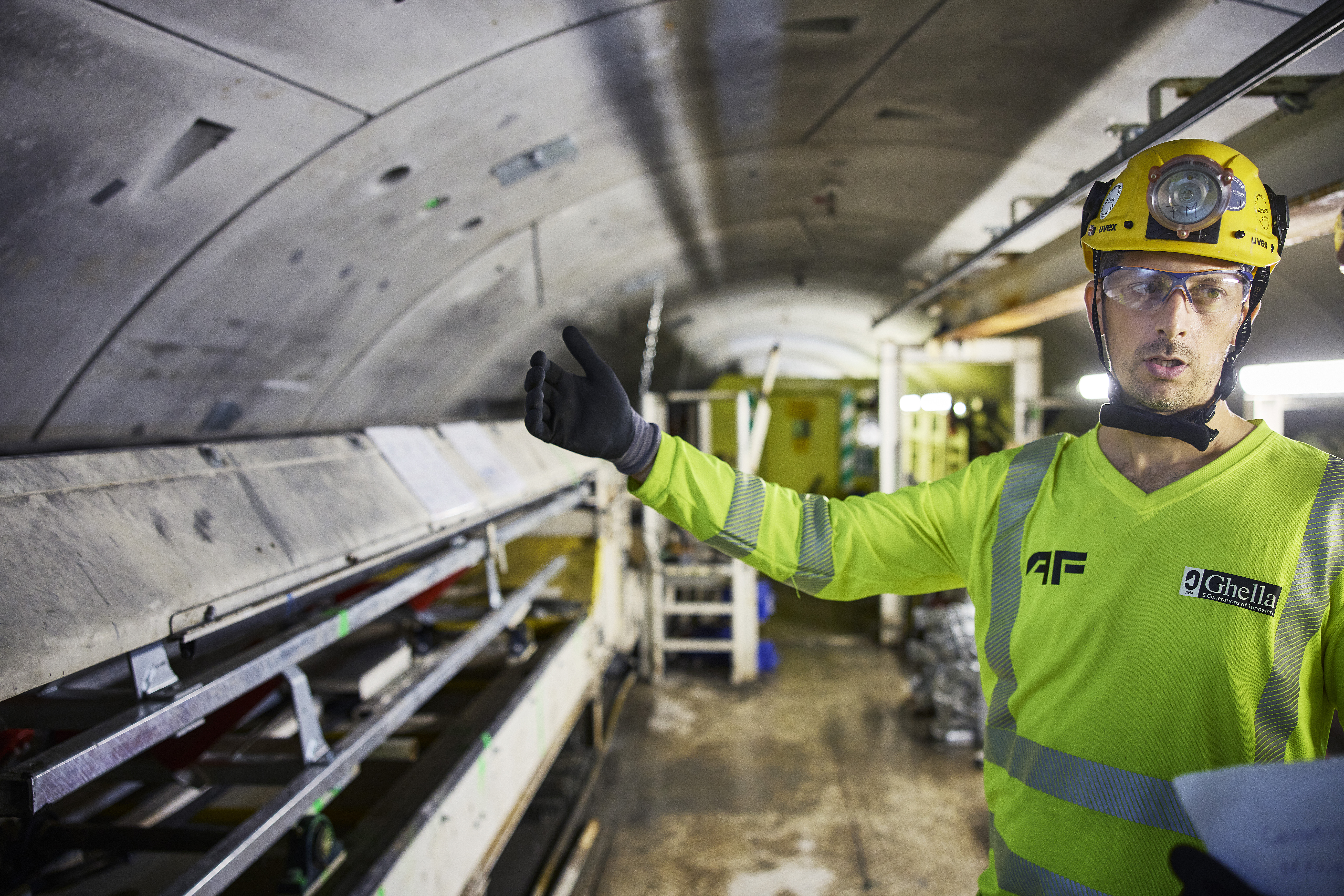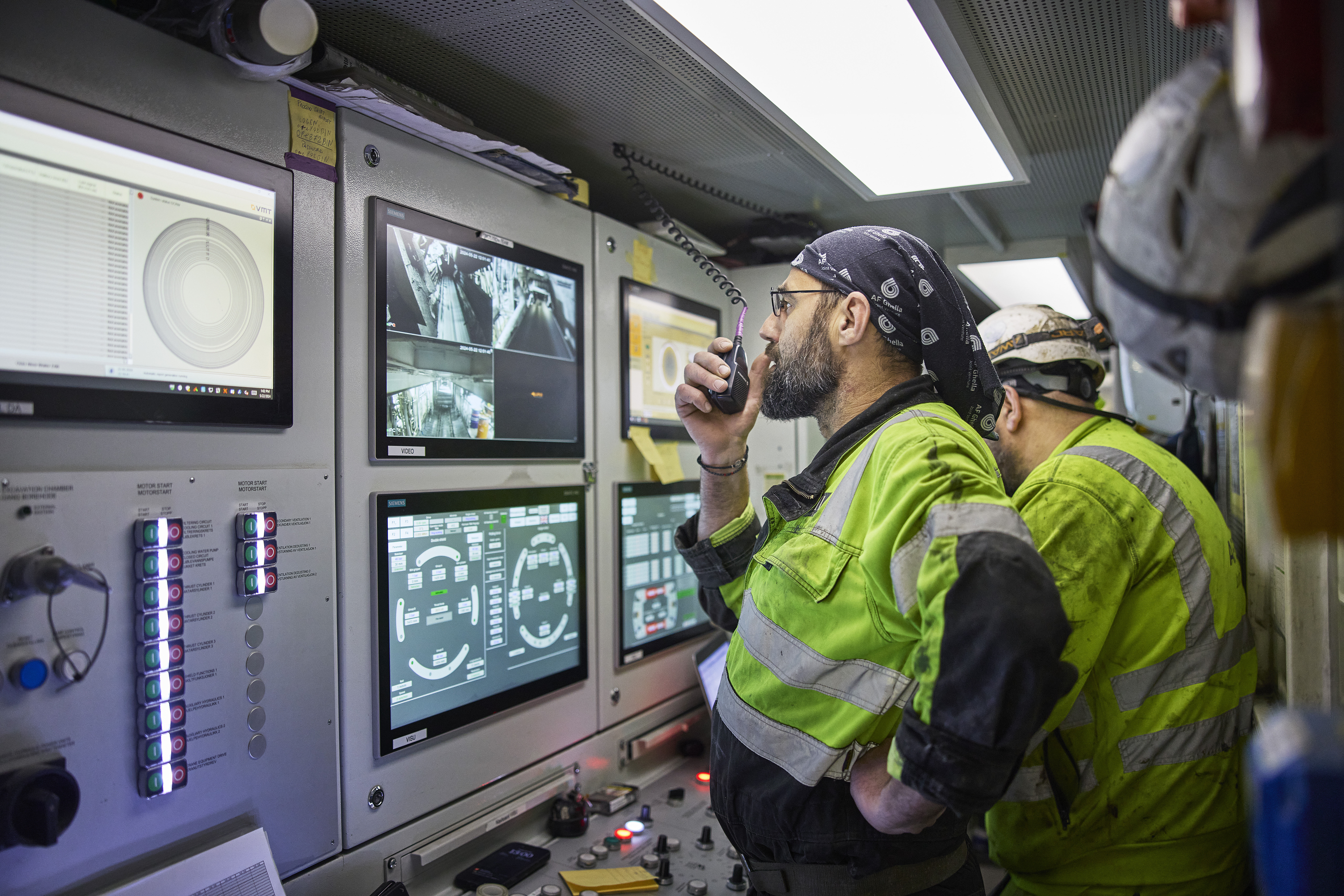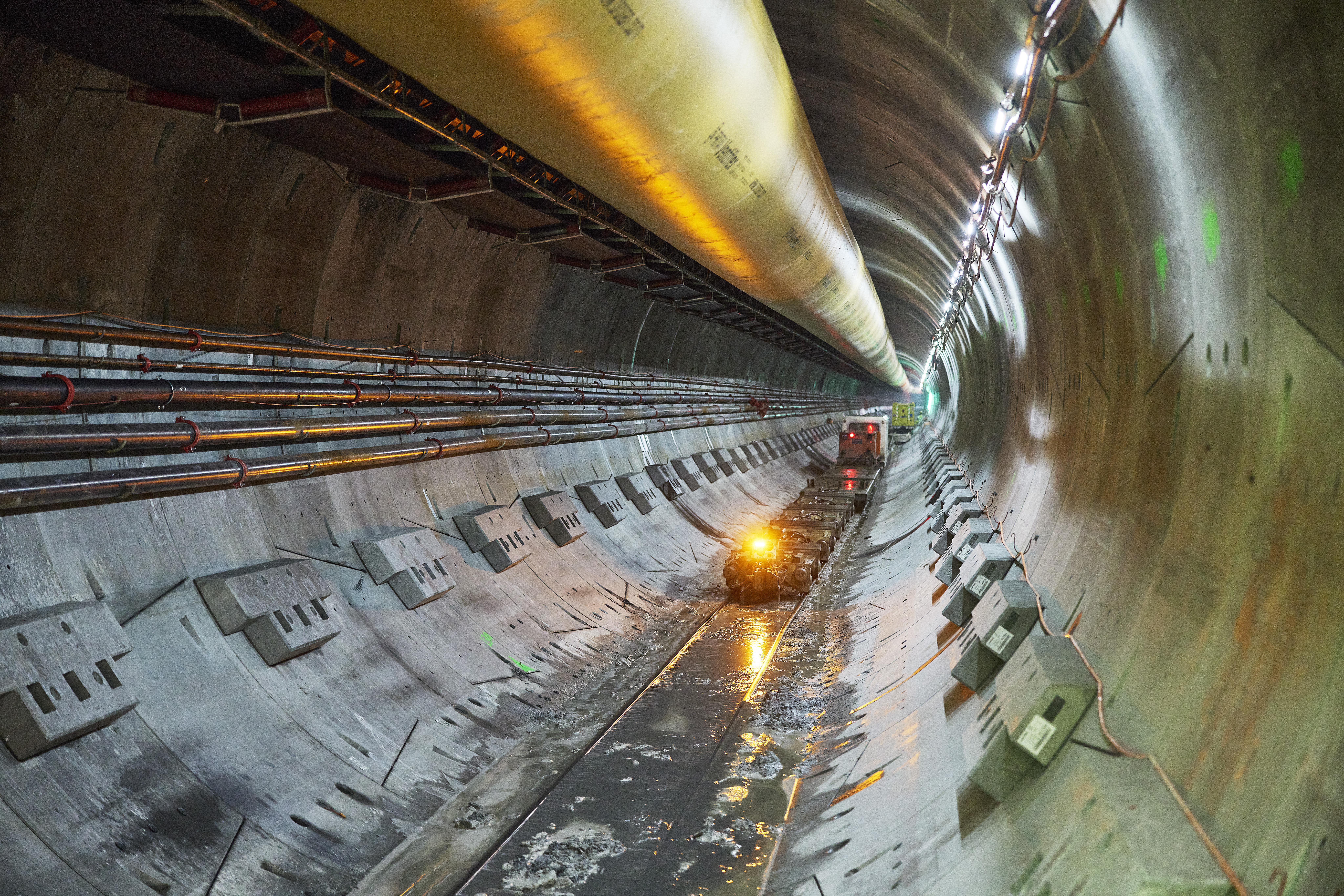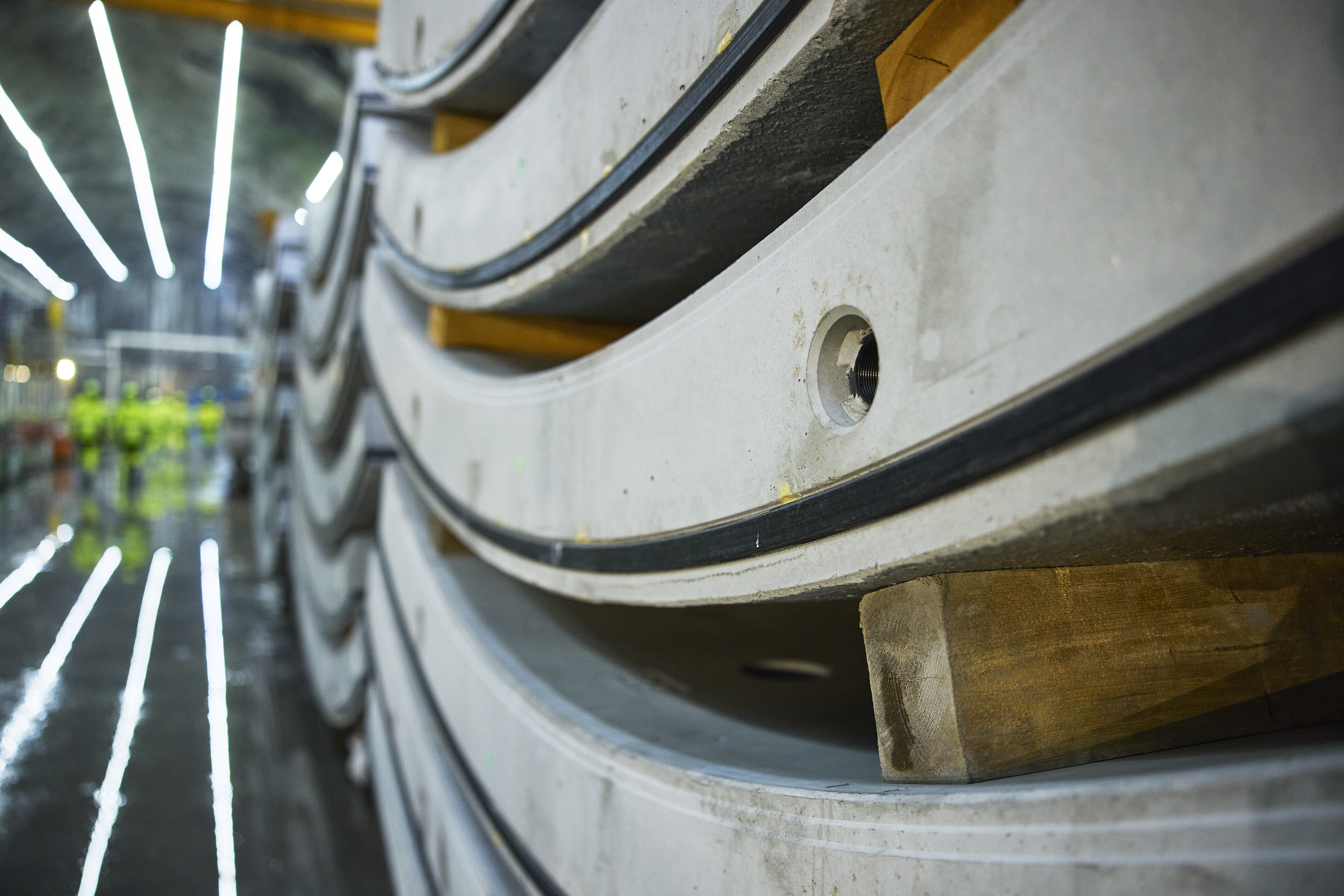How Laila drills her way under Oslo
01/07/2024 - 14:31
The tunnel boring machine (TBM) Laila is progressing steadily on its 11-kilometer journey from east to west through the capital, excavating the E6 Clean Water Tunnel Project.
Personnel, equipment, and precast element are transported to the TBM by train, while excavated materials are removed via conveyor belt. As the project advances, both train tracks and conveyor belts are continuously extended.
As of June, the TBM has advanced 1,100 meters into the tunnel, according to Fabio Moizo, the TBM Manager for the joint venture AF Ghella. Fabio, who has prior experience with TBMs in Brisbane, Australia, and on the Follobanen, ensures that Laila is operating as expected.
“So far, we have made progress of 10 meters per day. The goal is to work much faster, but a lot of injections have limited us,” says Fabio.
At the forefront of the TBM is a drill head with a diameter of just over seven meters, equipped with openings for drill strings. These strings create long holes in a shield formation for injecting cement slurry, which seals and stabilizes the rock before drilling.
As the work progresses, the tunnel is lined with precast segment, which come in six different patterns and include waterproof seals. The elements are locked into each other, and then fill material is injected into the gap between the rock and concrete elements creating a tunnel that meets stringent water intrusion standards.
The TBM, essentially a 200-meter-long tunnel factory, includes a back-up with offices and dining facilities. A platform runs alongside the machine, leading to various sections such as a workshop where the conveyor belt is extended as the tunnel deepens, and an operator cabin from which the TBM is controlled.
Usually, 15-16 people are working on the TBM, ensuring that Laila moves closer its destination: a mountain cavern at Huseby. Here another tunnel ends – the 19-kilometer tunnel that will transport raw water from Holsfjorden. At Huseby, the water will be processed in a large underground water treatment plant, before being distributed through the tunnel system that JV AF Ghella is in the process of building.
Currently, lake Maridalsvannet provides 90 percent of Oslo’s population with drinking water. A failure in this system could have severe consequences, necessitating the construction of a full-fledged backup water supply. The entire facility is scheduled for completion by 2028.







